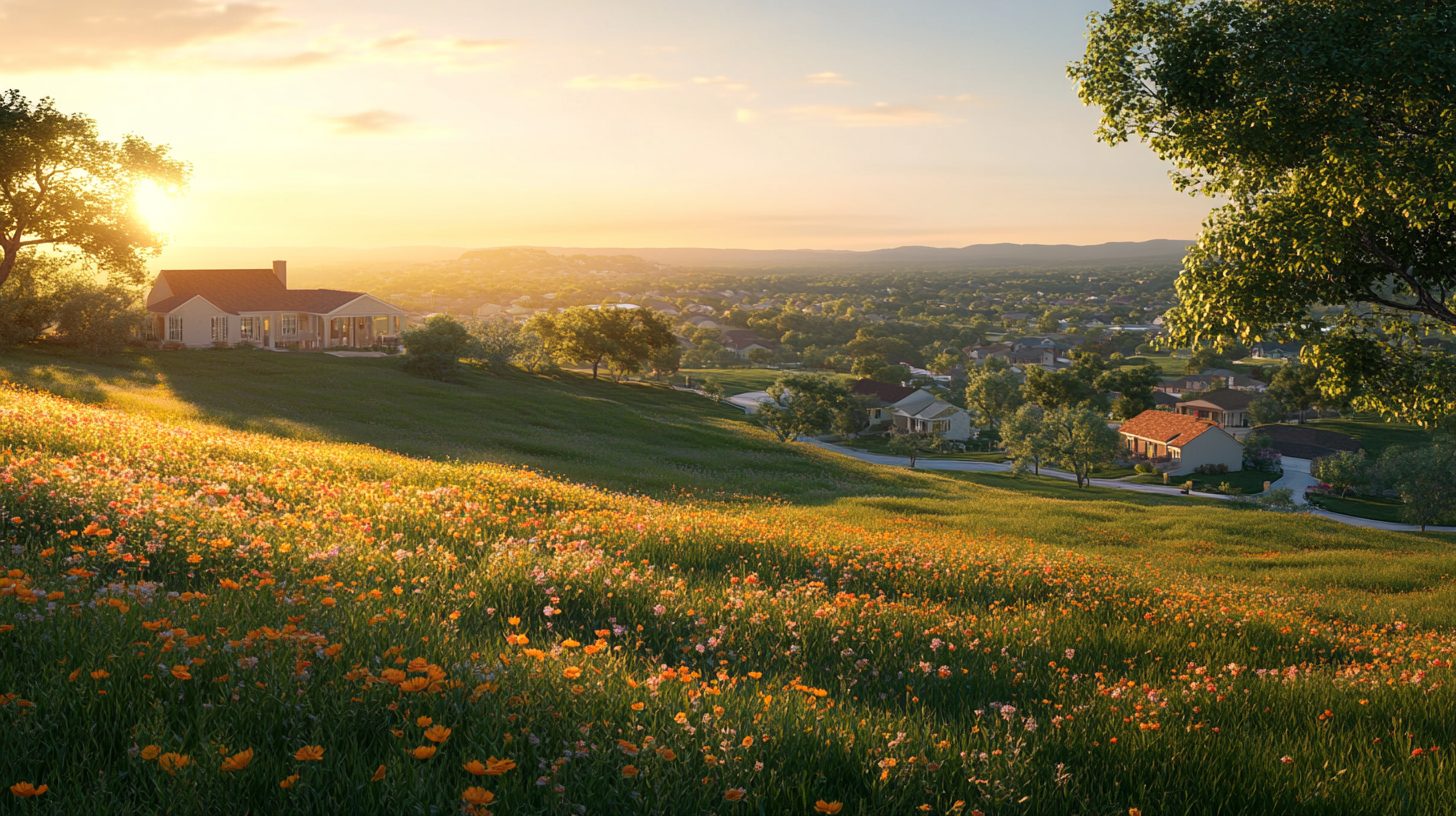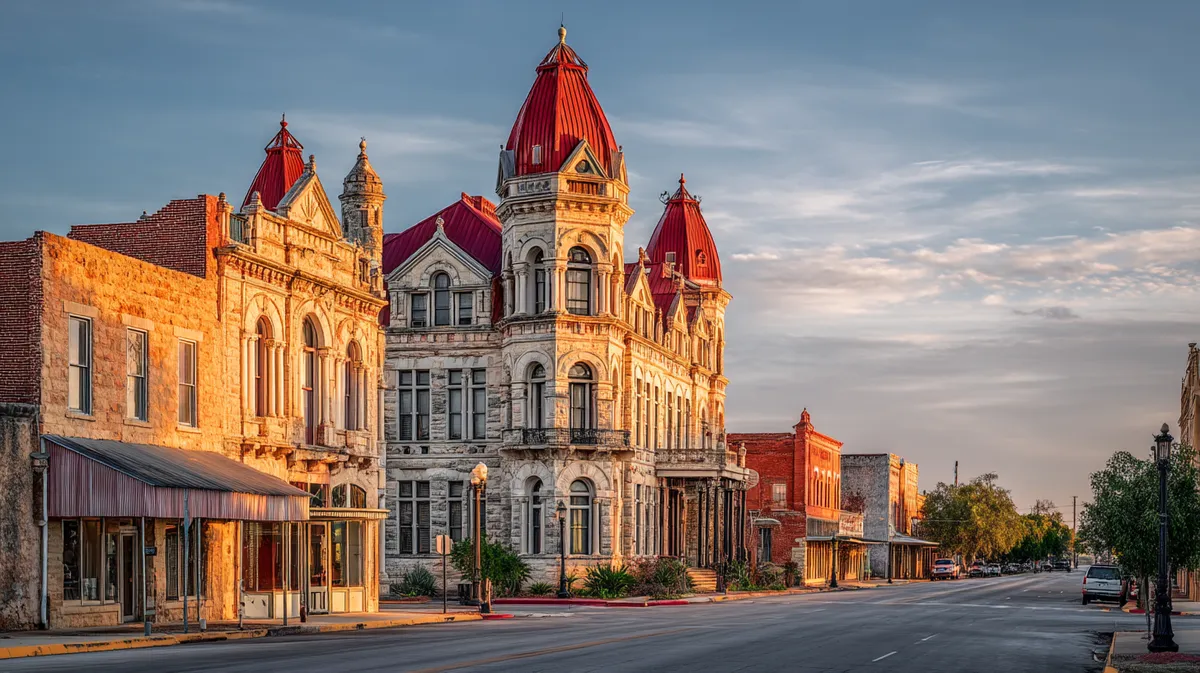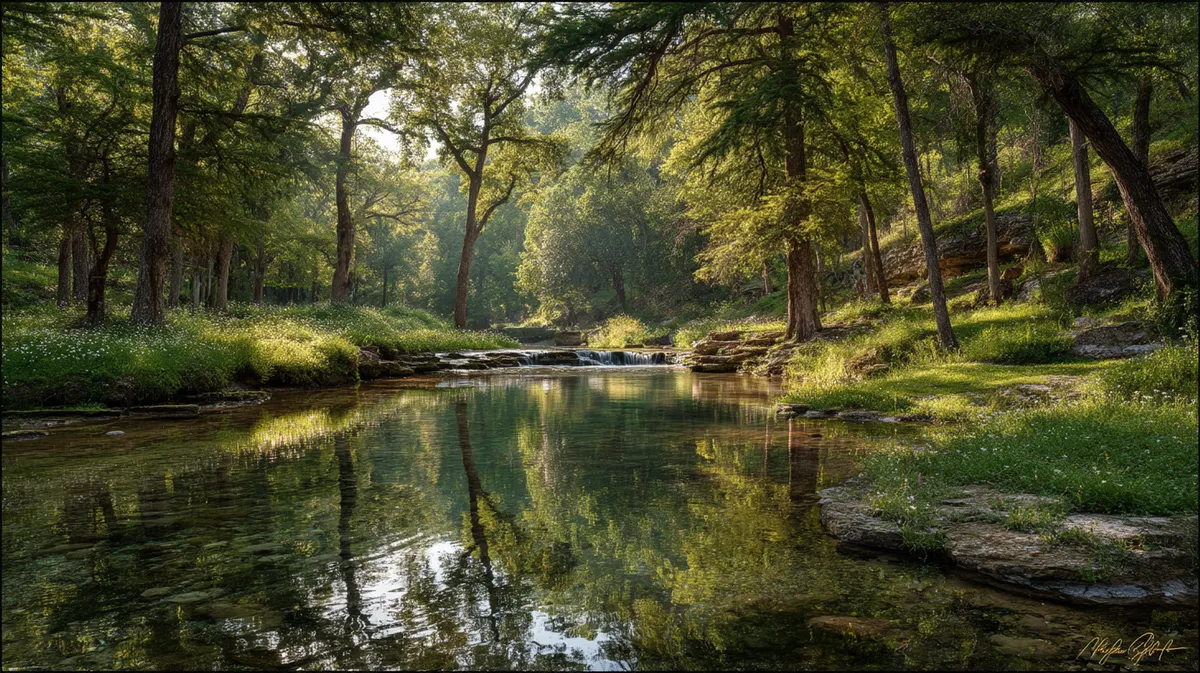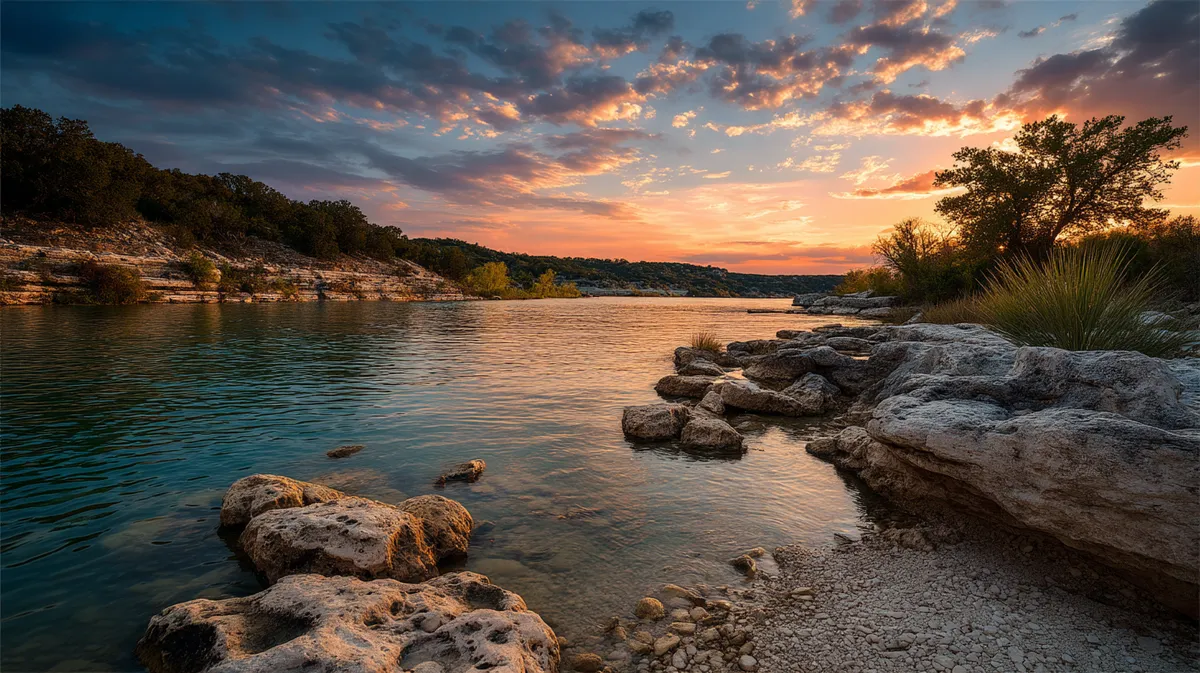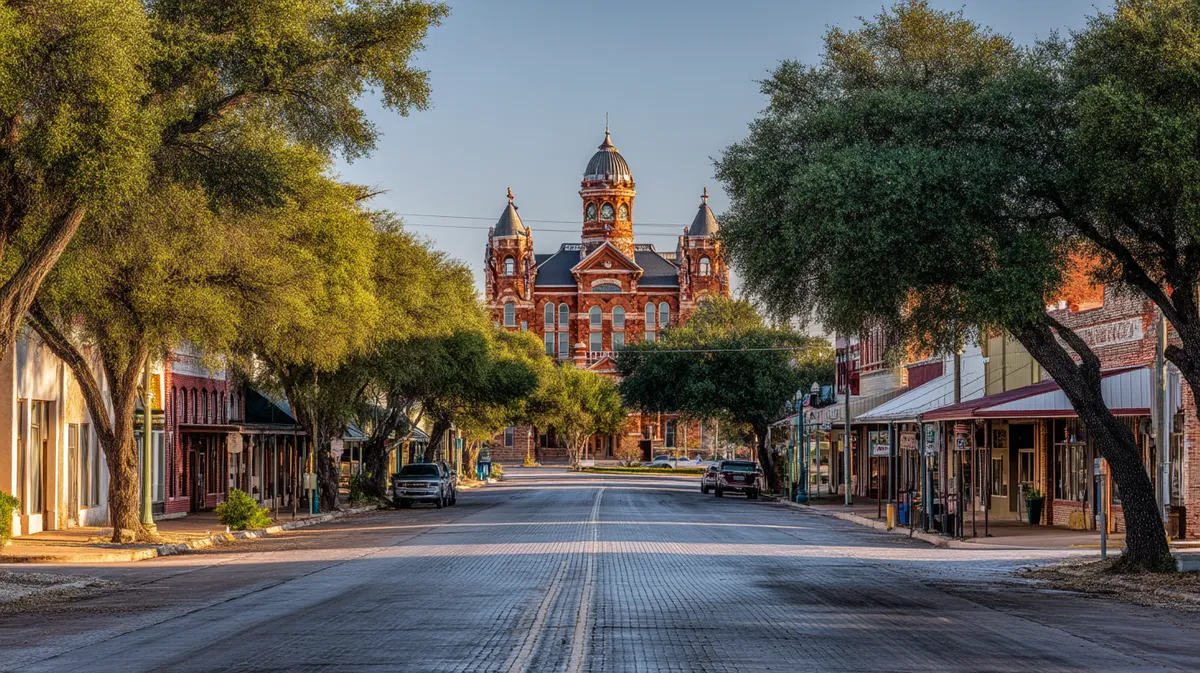Dripping Springs, Texas: a little patch of Hill Country paradise about 25 miles southwest of Austin. Some folks call it “The Gateway to the Hill Country,” but that’s a fancy way of saying “Hey, we’re close to all the city chaos without drowning in it.” The population in the city limits hovers somewhere around 5,000, but the greater area? It’s ballooning like crazy with new subdivisions and custom homes sprouting up seemingly overnight. If you’re eyeing Dripping Springs real estate, you’ll find a market that’s grown tougher for bargain hunters—average home prices can easily sail north of half a million. And guess what? People are more likely moving in than out. This place has that small-town vibe many crave, and they’re flocking here to get a slice of it.
Pros of Moving to Dripping Springs
First things first: the people. Dripping Springs folks aren’t the pretentious type. They’re the “come hang out on my porch and share a cold one” type—down-to-earth, friendly, and always ready to wave at you in the H-E-B parking lot. It’s community at its finest here. Sure, there’s a big helping of new folks from all over Texas (and the rest of the country) rolling in, but the blend of newcomers and old-timers creates this sort of raw synergy that keeps the town’s heart pumping. Nobody’s too cool to chat, and there’s a genuine sense that you can build real roots.
Then there’s Mother Nature. Holy cow, the scenery! Rolling hills, winding roads, breathtaking sunsets that set the sky on fire—this area’s got enough eye candy to keep your camera busy for days. If you’re the outdoorsy type, you’ll have easy access to spots like Hamilton Pool Preserve or Milton Reimers Ranch Park, where you can hike, swim, or just soak up that sweet, crisp Hill Country air. And because Drip (as the locals affectionately call it) is smaller, you can still spot the stars at night. Light pollution? Not so bad yet. So if lying out on the porch and counting shooting stars is your jam, you’ve found your place.
Let’s talk schools. The Dripping Springs Independent School District is touted as one of the best in the region. Folks are proud of it—and for good reason. Academic ratings, extracurricular opportunities, teacher quality: you’ll hear positive marks across the board. This is a big draw for families looking to move somewhere that gives their kids a head start in life without the city bustle. Plus, being a smaller community means you might actually get to know your kid’s teachers—and they might get to know you, too.
You can’t forget the live music scene and the craft culture. Even though Austin’s the big music hub, Dripping Springs isn’t some silent backwoods. Small venues, local bars, breweries like Twisted X, and wineries galore (shout-out to the area’s growing wine trail) give you plenty of ways to unwind. Don’t be surprised if you stumble upon an impromptu jam session at a local brewery or find yourself sipping an award-winning glass of Texas vino in what looks like someone’s backyard. This town’s laid-back approach to entertainment feels authentic, not mass-produced.
And let’s not skip over the fact that Dripping Springs is basically the “Wedding Capital of Texas.” There are more venues than you can shake a floral arrangement at. That might not be on your radar until your cousin calls you up wanting a Hill Country wedding, but it’s a neat bragging point. And it does mean you’ll always have a fresh wave of people passing through, pumping money into local businesses like coffee shops, restaurants, and boutiques.
All told, Dripping Springs is a sweet slice of Texas, nestled close enough to Austin that you can indulge in the city’s nightlife, but far enough out that you won’t feel suffocated. It’s got a close-knit community, nature for days, solid schools, and a unique local culture that’s proud and welcoming. If you’re chasing a home where you can still see the stars and maybe strike up a friendly chat with your neighbor, the pros here are definitely worth considering.
Cons of Moving to Dripping Springs
Let’s get real: Dripping Springs may look like that dreamy Hill Country haven, but it’s not all barbecue smoke and scenic vistas. For starters, the real estate market can knock the wind out of you. If you’re imagining snatching up a quaint little ranch for cheap, think again. Prices have crept up—call it the “Austin effect,” call it high demand, call it whatever. The median home price can hover around the mid $600Ks or beyond, and that’s if you’re lucky. On top of that, the property taxes in Texas might make you gasp like a fish out of water. Big houses on big lots might sound glamorous, but the tax bill can be a sucker punch.
Transportation is another kicker. Drip might be a stone’s throw from Austin in theory, but that stone can feel like it’s traveling through molasses come rush hour. Highway 290, the main artery from Dripping Springs to downtown Austin, can be bumper-to-bumper at peak times. If you’re commuting into the city daily, strap in—you might be crawling along for a good chunk of your morning. Public transport? Practically nonexistent. It’s the suburbs, baby. You drive, or you don’t get around. And those winding country roads may look picturesque, but good luck navigating them after dark if you’re not used to it.
Speaking of expansions, the population boom is both a blessing and a curse. The secret about Dripping Springs being a charming place is definitely out. That means more subdivisions popping up on farmland, more cars on the road, and more strain on local resources like water and infrastructure. Water, in particular, can be a sticky issue out here. Some folks rely on wells, and with growth, there are concerns about future availability and conservation. And if you’re not on a well, you might have to deal with higher utility bills than you’d find in more densely populated areas.
Rural living also means your entertainment options can feel limited if you’re used to city life. You’ve got your breweries, wineries, and a small handful of local joints, but the nightlife is hardly popping. If you love the neon glow of a downtown club scene or want a wide variety of late-night takeout, you’ll probably be hopping in the car and heading to Austin. The local restaurants are great but can be pricey, and grocery shopping at the local H-E-B might be the highlight of your week if you’re craving variety.
Let’s not forget the politics of small-town living. While Dripping Springs has been shifting and diversifying, it’s still small-town Texas, which can carry its own set of cultural norms. That might be a shock to the system if you’re expecting the all-inclusive vibe of a big metropolitan area. And if you want to keep a low profile, well, small towns have a knack for noticing who’s new, who’s renovating what, and who’s letting their grass grow too long.
So, yes, Drip can be magical, but there are obstacles. High home prices, limited transportation options, a fast-growing population challenging local infrastructure—these are no small matters. Before you plant yourself here, be aware that a slower pace of life also means you trade some big-city conveniences (hello, rideshares that actually show up on time!) for starry nights and neighborly chatter. If you can stomach that transition and the hefty real estate price tags, more power to you. But make sure you’re walking in with both eyes open.
Wrapping Up
Dripping Springs truly offers that big-hearted small-town vibe, complete with rolling hills and star-filled skies—but it doesn’t come without some trade-offs. We dove into the pros: a friendly community, killer Hill Country views, reputable schools, and enough wineries and breweries to keep things interesting. Then we peeled back the layers on the cons: steep home prices, increasing traffic, and growing pains that come with rapid development. As for the schools in Dripping Springs, they remain one of the town’s strongest selling points. The district continually scores high marks and draws families seeking top-notch education. Ultimately, if you’re weighing the move, it’s all about balance—can you handle the sacrifices for a shot at small-town Texas living at its best? Only you can decide.
FAQs for Potential Dripping Springs Home Buyers
- Is Dripping Springs a good place for families?
Absolutely. One of the biggest perks is the Dripping Springs Independent School District, well-regarded for its strong academics and community involvement. The area also boasts kid-friendly outdoor spaces—from local parks to hiking trails—so there’s plenty to keep families active and connected. - How far is Dripping Springs from downtown Austin?
You’re looking at roughly a 25-mile drive. Without traffic, that’s around 30-35 minutes. But during peak commute times, Highway 290 can feel like a parking lot, so plan accordingly. If you need big-city amenities on the regular, be ready for a bit of windshield time. - What’s the cost of living like?
Higher than you might expect for a smaller town. Housing is the big ticket item, with median prices often in the $600k+ range. You’ll also want to factor in property taxes, which can be hefty, especially if you’re used to lower rates in other states. - Do I need my own car to get around?
In a word: yes. Public transportation isn’t really an option out here, so most folks rely on personal vehicles. If you’re commuting or even just grocery shopping, a car is pretty much a necessity unless you really enjoy biking on narrow country roads. - Is there a sense of community in Dripping Springs?
Definitely. Locals are friendly, community events are frequent, and it’s not uncommon to strike up a conversation with a complete stranger. With a mix of long-time residents and newcomers, there’s an “everyone’s welcome” vibe. Just remember, small-town life also means everyone seems to know everyone’s business. - What about nightlife or weekend activities?
Dripping Springs isn’t exactly a 24/7 party town. You’ll find breweries, wineries, and live music spots, but if you’re after a bustling club scene or diverse late-night eats, Austin is your best bet. Many residents enjoy the laid-back, local spots here, then hop over to Austin when they crave more variety. - Are there any hidden costs to living in Dripping Springs?
Water and utilities can be pricier in certain areas, especially if you’re on a private well or need specialized septic maintenance. Property taxes can be a shock, too. Always factor in the annual tax bill and potential HOA fees when mapping out your budget for a Drip lifestyle.

